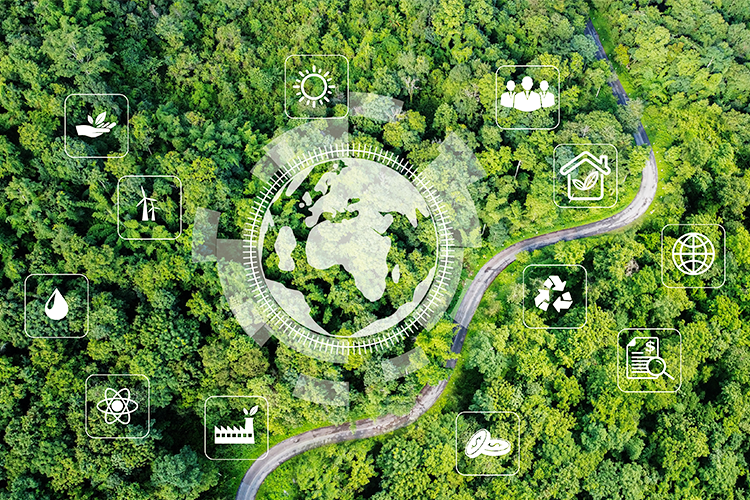
Ten Years of Agenda 2030: How Sustainable is Germany?
In 2015, the United Nations adopted the 2030 Agenda, establishing 17 Sustainable Development Goals (SDGs) to secure a socially just, economically viable, and environmentally sound future worldwide. But where does Germany stand ten years later in achieving these goals? Our new BSBI study sheds light on which German federal states are leading in sustainability. The analysis is based on data from the Federal and State Statistical Offices, measuring the implementation of all 17 goals. The focus on Germany and its individual federal states is deliberate, as key areas of sustainable development—such as education, environmental policy, and economic policy—are largely shaped by the federal states in this country. Looking at this level reveals regional differences and enables targeted recommendations for action. The results indicate that Bavaria is Germany’s most sustainable federal state.
Bavaria leads the national sustainability ranking
Across all 17 SDGs, Bavaria ranks first, making it Germany’s most sustainable state overall. The state performs particularly well impoverished reduction (Goal 1), responsible consumption and production (Goal 12), and peace, justice, and strong institutions (Goal 16). In second place is Brandenburg, scoring high in gender equality (Goal 5), sustainable cities and communities (Goal 11), and reducing inequalities among countries (Goal 17). Baden-Württemberg ranks third, mainly due to strong results in good health and well-being (Goal 3), as well as industry, innovation, and infrastructure (Goal 9).
Clear deficits: Bremen, NRW, and Saarland at the bottom
Bremen ranks last among the 16 federal states. Germany’s smallest state shows the weakest performance across several goals, including quality education (Goal 4), gender equality (Goal 5), poverty reduction (Goal 1), and life below water (Goal 14). North Rhine-Westphalia (NRW) ranks second to last, with significant deficits, especially in affordable and clean energy (Goal 7) and zero hunger (Goal 2). Saarland takes third-to-last place. While Mecklenburg-Western Pomerania ranks 10th overall, it scores last in several individual goals, such as good health and well-being (Goal 3), responsible consumption and production (Goal 12), and partnerships for the goals (Goal 17).
“After ten years of Agenda 2030, it is no longer enough to look at good intentions – what matters is what has actually been achieved,” explains Dr. Navya Gubbi Sateeshchandra, Professor of Business Administration and Sustainable Development at the Berlin School of Business and Innovation (BSBI). “The fact that we, as a business school, initiated this study indicates that sustainability has long been more than just an ethical concern – it is an economic policy issue with real consequences for innovation, location attractiveness, and social stability. The UN’s 17 goals are not a theoretical framework, but a practical benchmark for how sustainable regions are positioned. Our comparison of German states shows where progress has been made – but also where urgent action is needed. Education, social participation, and infrastructure in particular must no longer be treated as marginal issues if we are serious about sustainable development.”
About the study
For the sustainability ranking of Germany’s 16 federal states, official data from the joint statistics portal of the Federal and State Statistical Offices was evaluated. For each of the 17 UN Sustainable Development Goals (SDGs), the most recent available data point was used. Where multiple indicators were available for a goal, an average was calculated. For some goals – particularly Goal 6 (Clean Water), Goal 13 (Climate Action), Goal 14 (Life Below Water), and Goal 15 (Life on Land) – current data were unavailable for all states. In these cases, certain states were excluded from the respective goal assessment. Based on these indicators, both an overall state ranking and individual goal rankings were compiled.
The 17 UN Sustainable Development Goals at a glance:
Goal 1 – No Poverty
Goal 2 – Zero Hunger
Goal 3 – Good Health and Well-being
Goal 4 – Quality Education
Goal 5 – Gender Equality
Goal 6 – Clean Water and Sanitation
Goal 7 – Affordable and Clean Energy
Goal 8 – Decent Work and Economic Growth
Goal 9 – Industry, Innovation and Infrastructure
Goal 10 – Reduced Inequalities
Goal 11 – Sustainable Cities and Communities
Goal 12 – Responsible Consumption and Production
Goal 13 – Climate Action
Goal 14 – Life Below Water
Goal 15 – Life on Land
Goal 16 – Peace, Justice and Strong Institutions
Goal 17 – Partnerships for the Goals